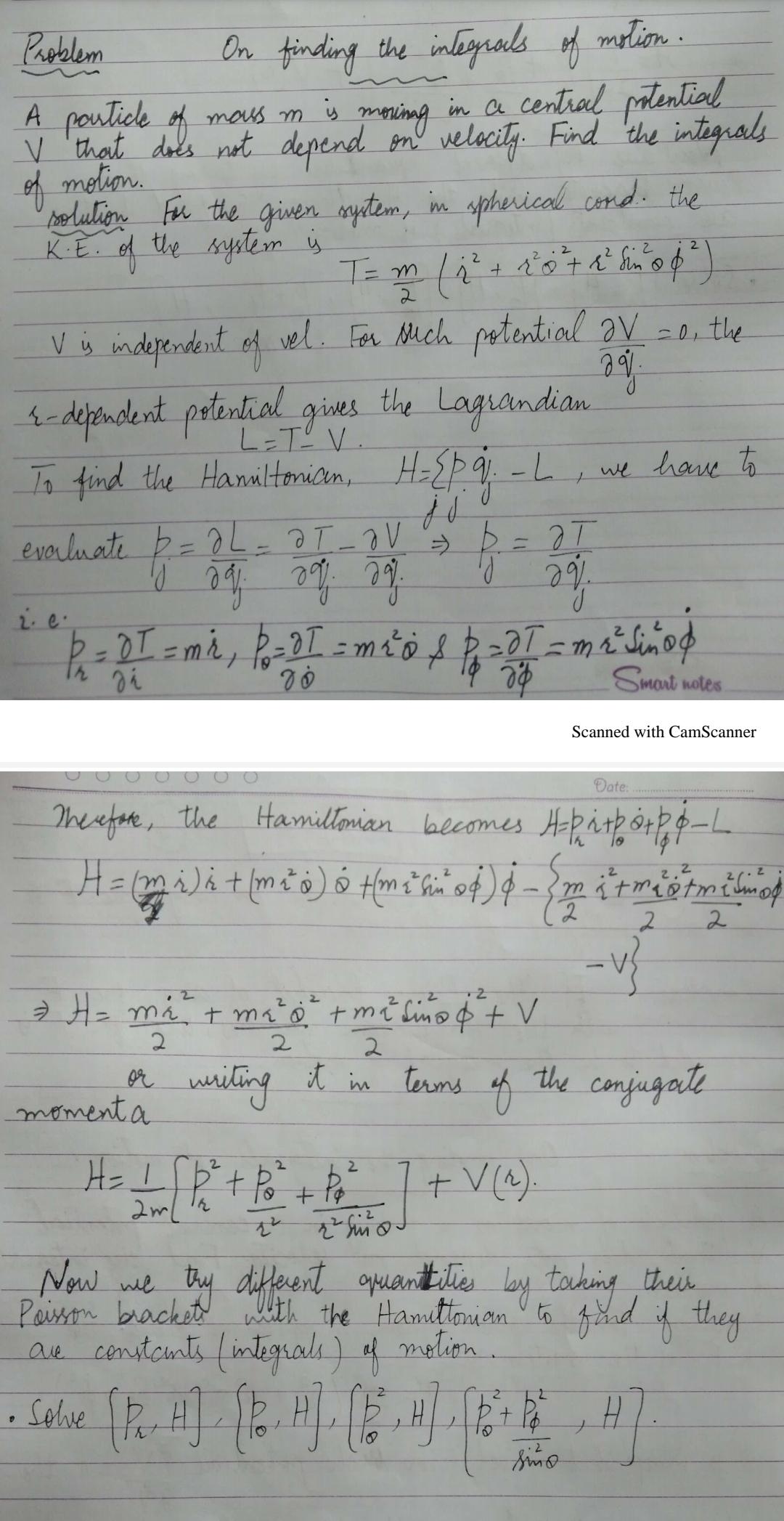Answered step by step
Verified Expert Solution
Question
1 Approved Answer
Problem motion. is mous m in a central potential A particle of that does not depend on velocity. Find the integrals V maing of

Problem motion. is mous m in a central potential A particle of that does not depend on velocity. Find the integrals V maing of motion. solution for the given system, in spherical cond. the the system is K.E. of On finding the integrals of T= m 2 V is independent of vel. For such potential IV-0 the 29 2-dependent potential gives the Lagrandian To find the Hamiltonian, H={P. 9 - L 9. evaluate b = OL - OT_aV y 291 =k 29. og. dg. moment a 2 2 ( + 20 + 1 sin 0 4 ) or writing 2 p = D I = mr, P = 0I = mo $ po 0 T = m di 'd 2 2 L2 H = b + P + P 2ml = 2 = H = m + m0 + m sims 4 + V 2 2 2 2 simo. Date: Therefore, the Hamiltonian becomes A-pritpopo-L H = (mi) i + (m ) Hm { "Sin of) 4 04) 2 it in terms of + 29. =OT = mr Sinod + V (r). have to Smart notes Scanned with CamScanner - mitmistmismod 2 2 -v} the conjugate 2 2 (2+H] [E+ H PH 1 #7 Now me thy different quantities by taking their Poisson brackets with the Hamiltonian to find if they are constants (integrals) of motion. Solve [PH]. [Po.
Step by Step Solution
★★★★★
3.48 Rating (171 Votes )
There are 3 Steps involved in it
Step: 1

Get Instant Access to Expert-Tailored Solutions
See step-by-step solutions with expert insights and AI powered tools for academic success
Step: 2

Step: 3

Ace Your Homework with AI
Get the answers you need in no time with our AI-driven, step-by-step assistance
Get Started


